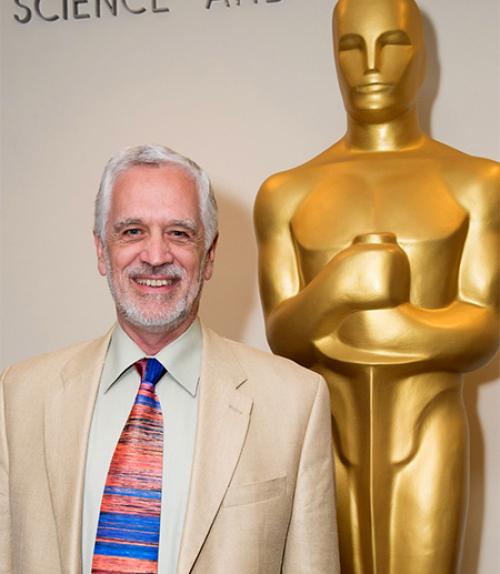Good filmmakers know intuitively that close-ups can be much briefer than longer-distance shots and still maintain their power. A Cornell psychologist has explained why.
It takes less time to read an actor’s expression when her face fills up the frame and there’s nothing else in the shot to distract from it. And conversely, the further away the shot, the longer it takes the viewer to wade through the visual clutter, find the actor’s face and discern emotions.
“The larger the character is in the frame, the shorter the shot needs to be,” said James Cutting, the Susan Linn Sage Professor and chair of Department of Psychology. “What filmmakers are indirectly telling us is, clutter costs in visual perception. If it’s important for the viewer to look at a person’s face, they are able to create situations that are not as cluttered. When filmmakers compose scenes, they do what works.”
The study, “Facial expression, size and clutter: Inferences from movie structure to emotion judgments and back,” appears in the journal Attention, Perception and Psychophysics. Cutting’s co-author is Kacie Armstrong, a Cornell doctoral candidate in the field of psychology.
The researchers based their findings on the results of four studies. First, they measured the duration and scale of all the shots in 24 popular movies made between 1940 to 2010. While analyzing the 31,000 shots, they found that close-ups were briefer, while longer-scaled shots were longer in duration. The authors hypothesize that because the faces are larger in shorter-scaled shots, their emotional expressions might be easier – and faster – to read.
To test that idea, they then timed how quickly study participants could identify whether people in 24 photos were expressing happiness or disgust. The photos were reproduced in four sizes, to replicate extreme close-ups, medium shots, long shots and extreme long shots. The closer the shot, the quicker the participants identified the emotion.
Cutting and Armstrong then replicated that study, this time using 24 movie stills in which the actors’ faces were surrounded by clutter – anything from objects to animals, other people, textures or shadows. The study participants took much longer to identify the expressions in stills that had more clutter.
“Clutter distracted the viewers and made the task of recognizing the emotion more difficult,” Cutting said.
In their last study, the authors analyzed the duration, scale and degree of visual clutter in 53,000 movie stills, taken from six films. The result? The closer the shot and the less clutter it had, the shorter the duration.
“We concluded that, although filmmakers’ knowledge about their craft often is tacit rather than explicit, they understand that visual clutter impedes recognition, and that the longer-scale cluttered shots often must have even longer durations than they might otherwise,” Cutting said.
He argues that the cinema, and how its structure is so different from what is seen during, say, a stroll through the real world, provides insights into the underpinnings of our visual perception.
“Since we did not evolve to look at cinema, and since it arguably ‘evolved’ to fit what we can digest easily, its structure can suggest what our visual systems did, and did not, evolve to see,” he said.
This article orginally appeared in the Cornell Chronicle.




